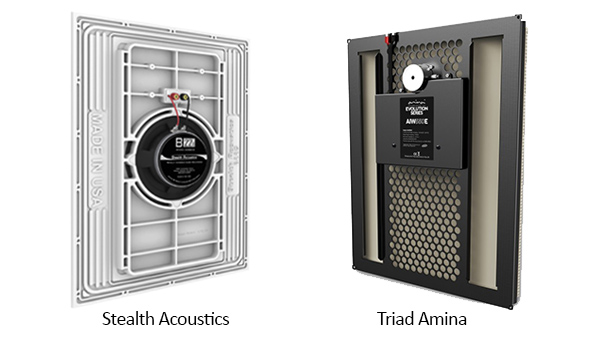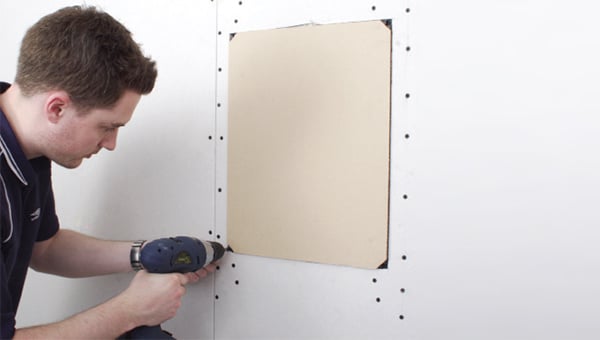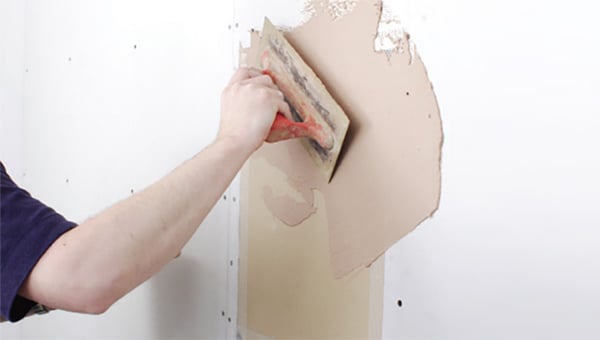If you haven’t seen invisible speakers (which you probably haven’t since they’re invisible … hardy-har-har), then here’s a quick primer …
Invisible or “stealth” speakers are designed for aesthetically sensitive applications where you want to be able to hear sound, without the cutouts and circular grills you see with traditional ceiling speakers.
Invisible speakers are installed as if they were a section of drywall. The edges are lightly skimmed over with plaster, sanded smooth, and then painted. The resulting effect leaves the speaker completely invisible to the naked eye. As a trade-off, there is a minor degree of sound quality that’s sacrificed, but nothing that most could ever measure without a serious degree of analysis and testing.
Two popular brands, Stealth Acoustics and Triad’s Amina line are engineered in two very different ways. Both are similar in that they have a number of models available with different wattages, numbers of drivers, and physical sizes. Subwoofers are also available from both manufacturers. So what is the difference and how to choose? Depending on the type of project, each has an appropriate application.
Stealth Acoustics speakers are based on a more traditional cone type of speaker mounted to the back of a fiberglass frame. We’ve found that these are most easily installed in a new construction project where wooden studs are clearly visible and additional support framing can be added where necessary. Air ducts, plumbing, and other wires are still exposed to make placement easier. Stealth Acoustics can also weigh a little bit more.
Triad Amina speakers are designed more to resonate the way a musical instrument would, optimally distributing the audio signal through the speakers’ exciters into the acoustical panel and throughout the wallboard. Triad Amina speakers tend to be lighter and thinner, which make them a more suitable candidate for post-construction installations and where clearance may be limited, such as in apartments. We also advise using subwoofers with Triad Amina speakers since the frequency width is slightly narrower.
Back boxes are also recommended in areas where you want to limit the amount of sound transfer to any floors above. Similar to enclosed speakers, they provide an optional insulated box that covers the back and limits the sound to come out only one direction.
Invisible speakers typically have a higher price point than traditional ceiling speakers. For that reason, many clients opt to use them only in select locations — such as in common areas on the main floor and in the master suite.
Copyright ©2016 ALLAV.COM | All Rights Reserved





